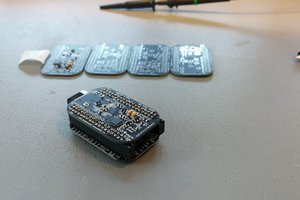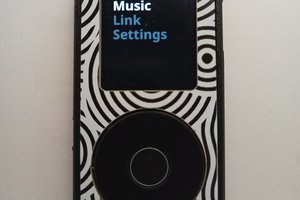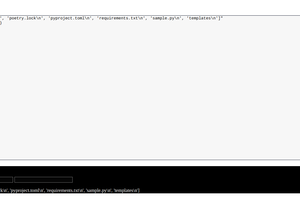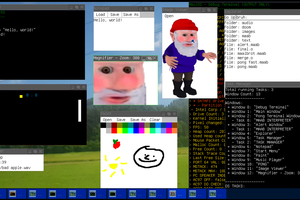The Zoom F1 field recorder is a small 2 channel professional audio recorder. It's portable, and offers a very versatile audio recorder that can be mounted to cameras, hooked on a belt, and jammed wherever it may be needed. It records very high quality audio, as well as plays it back. It's this second feature I was so interested in, after the demise of my smartphone at work. The welding spatter had burned the screen, then I dropped it and shattered it while trying to clean it off. I was unable to find a proper portable player and decided to try this device again. This time I was successful and am listening to an album as I type this up. This is a very easy project, and will be the first one I have completed here. It's not a perfect media player, but it is very good for what I need. I'll share what it's good at, what it isn't, and how to make it play back music files. I have not done much testing yet, as I just got it working. I will go through all the settings and play around with it more later and update things as needed.
The Good:
It will happily play back mp3 files without any interruptions, until the batteries die. It takes 2 AAA batteries, which can be swapped out very quickly so there is no need to go without music as it charges. It takes micro SD cards. It can record audio if needed, such as voice memos or butt sounds. It is non-intrusive. No updates, no random glitches I've found, no games or nonsense to distract from music or tasks. It's very durable. This is a professional device and is built as such. For about $170, it makes a solid music player and audio recorder. For the same price the next best options are all generic Chinese devices, outdated players, or overly complicated devices with touchscreens that will not fare well in harsh environments. It has a physical hold button, which prevents any input. I use this feature while recording often. It has physical buttons for every feature, including volume. It has 100 volume steps and you can set the volume almost exactly where you want it. The simple backlit LCD screen is easy to read, even at odd angles. It can play, pause, skip, and stop playback with buttons right on the front. It has micro USB for power and data. I think it is one of the models that can be used as a USB microphone. Plugging in USB seems to conserve battery power as well. It transitions seamlessly between battery and USB power. It has a nice 3.5mm headphone jack with a screw on bit for headsets that support it. The sound quality is excellent, as would be expected of a professional audio recorder. I hear no noise, or random artifacts. Just music. I'm using in ear stage monitors and I'm hearing things in my music I have never heard before. It gets incredibly loud, and also fairly quiet.
The Not So Good
It is not designed as an mp3 player, and that does show. The biggest downside is that it requires the files to follow a specific naming convention. For example: ZOOM0001.MP3. I used a bulk rename utility for Linux to rename copies of the files from an album to put onto the SD card of this recorder. It works fine for playback. The song name is displayed as the ZOOM file name. There is no shuffle feature, and it only plays in numerical order. I listen to a few thousand songs, so this isn't too much of a problem. I plan to find a software workaround for this such as renaming the files in a random order every once in a while. It's expensive for such a simple music player. It uses AAA batteries. I don't like disposable batteries, so I will buy professional rechargeable batteries for it. There is no equalizer or any kind of audio effects. I don't mind this one bit. There is no buetooth. I hate bluetooth with a passion, so this is fine with me, but I know how much people like their bluetooth.
Initial Thoughts
In the half hour or so I've been using this as an MP3 payer, I've enjoyed it. The true sign of a good tool for me is if I don't notice it. If it can just blend into the background, get out of...
Read more »

 Pero
Pero


 Marcel
Marcel
Not to take anything away from what you're trying to accomplish, but have you considered simply purchasing an old iPod? An iPod Mini is a tough device. https://batteriadipentole.com/